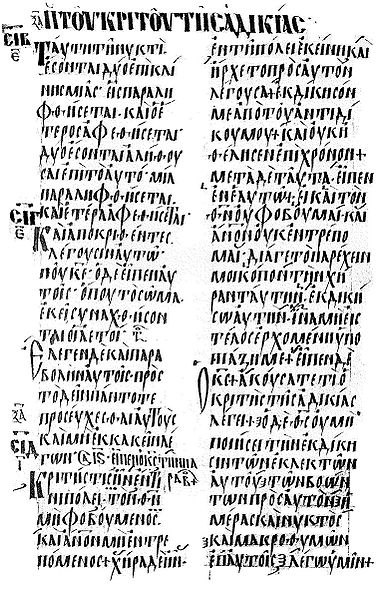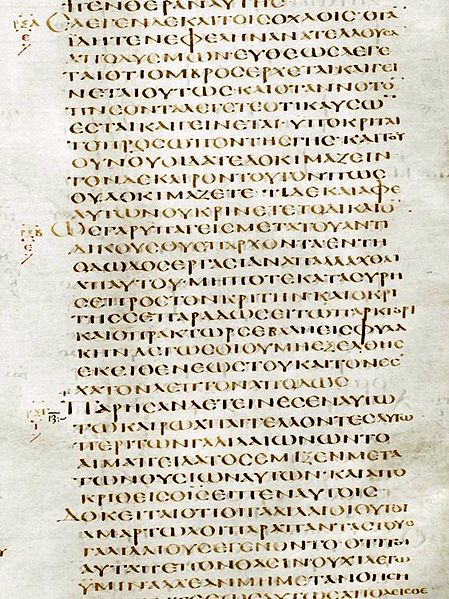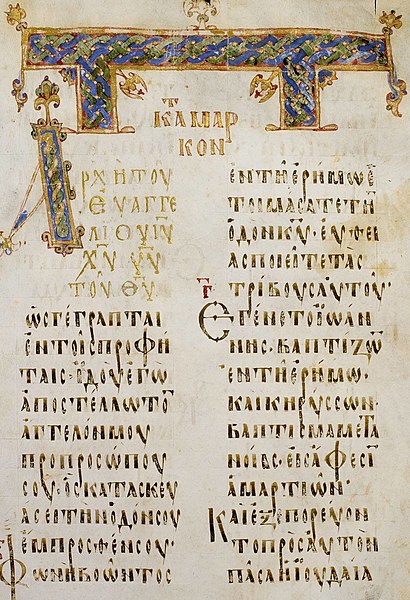In textual criticism of the New Testament, Caesarean text-type is the term proposed by certain scholars to denote a consistent pattern of variant readings that is claimed to be apparent in certain Koine Greek manuscripts of the four Gospels, but which is not found in any of the other commonly recognized New Testament text-types. In particular a common text-type has been proposed to be found: in the ninth/tenth century Codex Koridethi; in Codex Basilensis A. N. IV. 2 ; and in those Gospel quotations found in the third century works of Origen, which were written after he had settled in Caesarea. The early translations of the Gospels in Armenian and Georgian also appear to witness to many of the proposed characteristic Caesarean readings, as do the small group of minuscule manuscripts classed as Family 1 and Family 13. However, some text-critics, such as Kurt and Barbara Aland have disputed the existence of a Caesarean text-type.
Codex Coridethianus
In the textual criticism of the New Testament, the Byzantine text-type is one of the main text types. It is the form found in the largest number of surviving manuscripts of the Greek New Testament. The New Testament text of the Eastern Orthodox Church, the Patriarchal Text, as well as those utilized in the lectionaries, are based on this text-type. Similarly, the Aramaic Peshitta which often conforms to the Byzantine text is used as the standard version in the Syriac tradition, including the Syriac Orthodox Church and the Chaldean church. Whilst varying in at least 1,830 places, it also underlies the Textus Receptus Greek text used for most Reformation-era (Protestant) translations of the New Testament into vernacular languages. Modern translations mainly use eclectic editions that conform more often to the Alexandrian text-type, which is viewed as the most accurate text-type by most scholars, although some modern translations that use the Byzantine text-type have been created.

Codex Vaticanus 354 S (028), an uncial codex with a Byzantine text, assigned to the Family K1
Codex Alexandrinus, the oldest Greek witness of the Byzantine text in the Gospels, close to the Family Π (Luke 12:54-13:4)
Evangelist portrait of Mark from Garima 2, likely the earlier of the two Garima Gospels
Codex Boreelianus, Byzantine manuscript, member of the Family E





